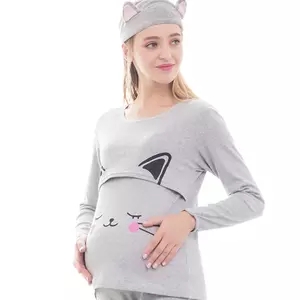1. Age-Based Sizing:
- Newborn (NB): Typically fits babies up to 3 months, with a height range of about 18-23 inches and a weight range of 5-12 pounds.
- 0-3 Months: Fits babies aged 0 to 3 months, with a height range of about 20-24 inches and a weight range of 8-13 pounds.
- 3-6 Months: Designed for babies aged 3 to 6 months, with a height range of about 24-27 inches and a weight range of 12-17 pounds.
- 6-9 Months: Fits babies aged 6 to 9 months, with a height range of about 27-29 inches and a weight range of 16-21 pounds.
- 9-12 Months: Designed for babies aged 9 to 12 months, with a height range of about 28-31 inches and a weight range of 20-25 pounds.
- 12-18 Months: Fits toddlers aged 12 to 18 months, with a height range of about 30-33 inches and a weight range of 23-28 pounds.
- 18-24 Months: Designed for toddlers aged 18 to 24 months, with a height range of about 32-35 inches and a weight range of 26-31 pounds.
2. Toddler and Kids Sizing:
- 2T: Fits toddlers aged 2 years, with a height range of about 33-36 inches and a weight range of 28-31 pounds.
- 3T: Designed for toddlers aged 3 years, with a height range of about 36-39 inches and a weight range of 29-33 pounds.
- 4T: Fits toddlers aged 4 years, with a height range of about 39-42 inches and a weight range of 34-38 pounds.
- 5T: Designed for toddlers aged 5 years, with a height range of about 42-45 inches and a weight range of 39-44 pounds.
- XS (4-5): Fits kids aged 4 to 5 years, with a height range of about 39-44 inches and a weight range of 34-44 pounds.
- S (6-7): Designed for kids aged 6 to 7 years, with a height range of about 45-50 inches and a weight range of 45-60 pounds.
- M (8-10): Fits kids aged 8 to 10 years, with a height range of about 51-56 inches and a weight range of 61-85 pounds.
- L (12-14): Designed for kids aged 12 to 14 years, with a height range of about 57-63 inches and a weight range of 86-115 pounds.
3. Measuring Tips:
Include detailed instructions on how to measure a child for accurate sizing. Provide guidance on measuring height, chest, waist, and hips, and recommend that parents choose a size that offers a little room for growth.
4. Pajama Fit:
Indicate whether your pajamas have a loose or snug fit. Parents may prefer looser fits for comfort and growth, while snug fits can be safer for younger children.
5. Size Chart:
Present the sizing information in a clear and easy-to-read chart format, listing the various sizes, corresponding age ranges, height ranges, and weight ranges for each size.
6. Additional Tips:
Offer tips on how to choose the right size if a child falls between two sizes, as well as information on how the pajamas might shrink or stretch after washing.
Remember, different brands might have slight variations in sizing, so it’s crucial to provide clear and accurate measurements to help parents make the best choice. The more comprehensive and user-friendly your sizing guide is, the more confident your customers will be in selecting the right pajamas for their growing children.
























